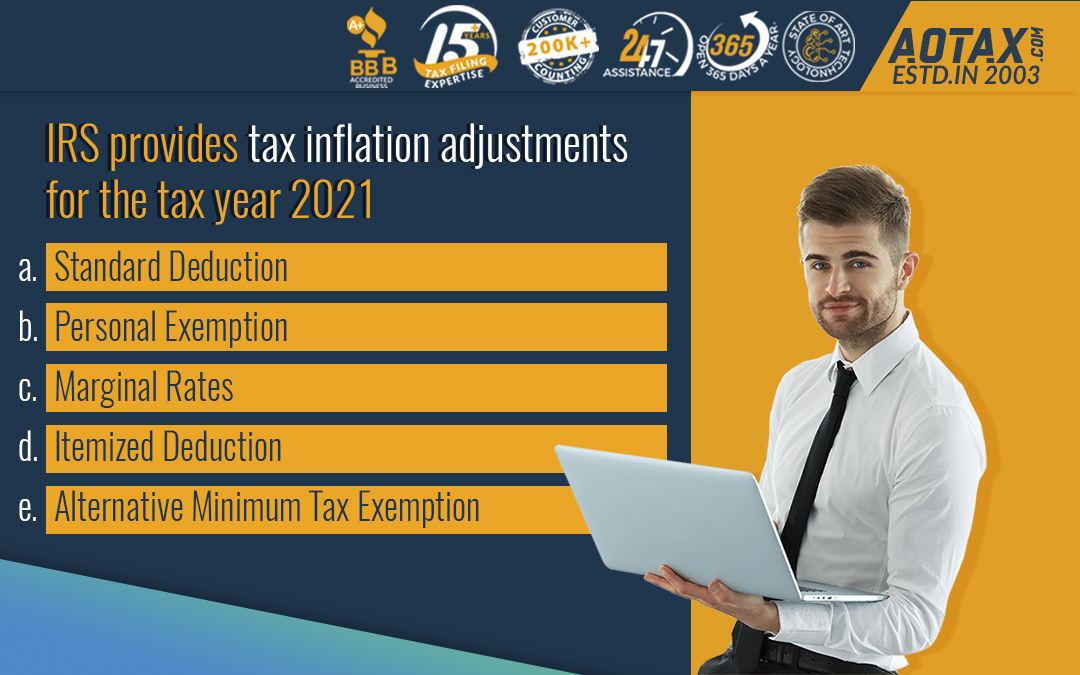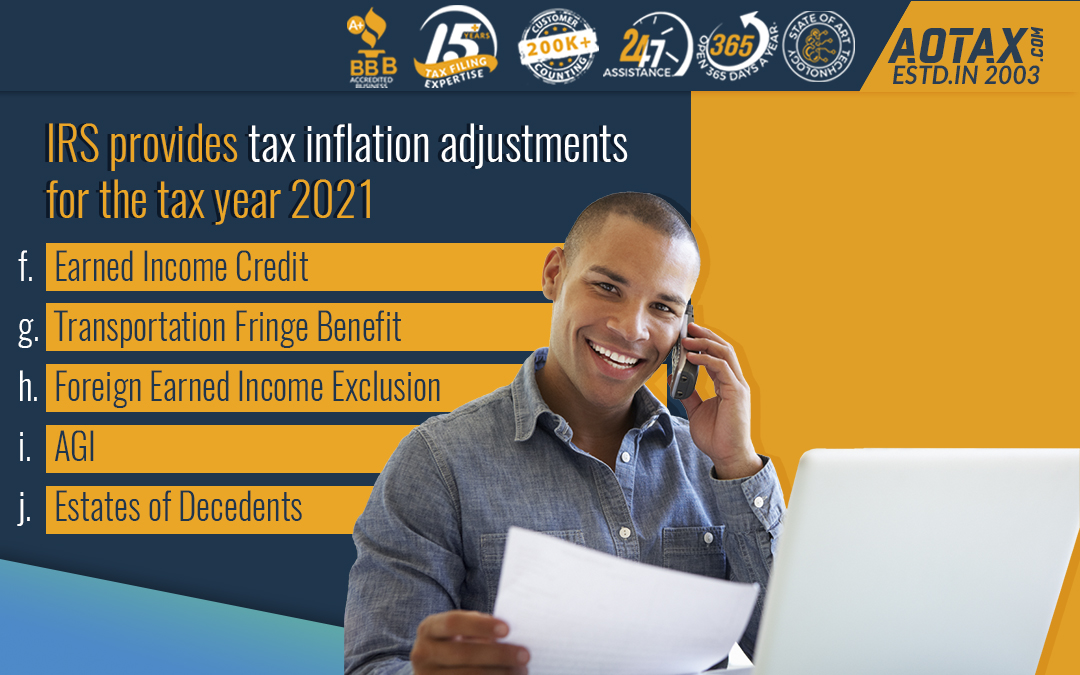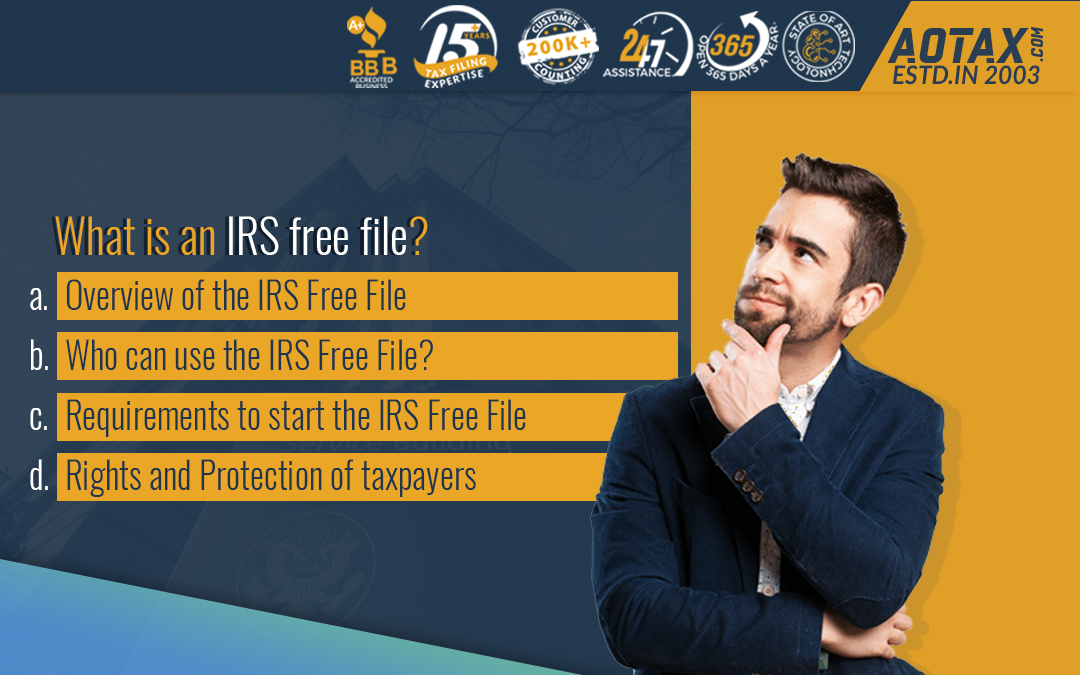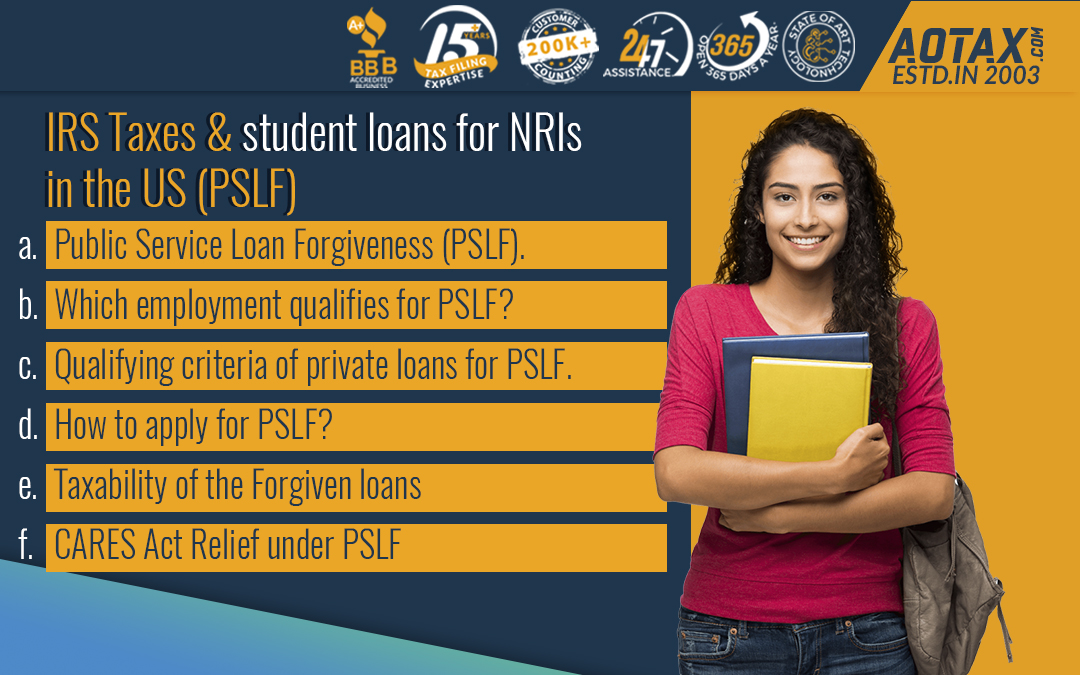IRS provides tax inflation adjustments for the tax year 2021.
IRS provides tax inflation adjustments for the tax year 2021.

The IRS has announced the annual inflation adjustments in the tax year 2021 for around 60 tax provisions. These provisions would include the changes in the tax rates and also the other tax changes.
By the Consolidated Appropriation Act of 2020, there has been an increase in the minimum amount of tax addition that is done for your failure of filing tax returns within 60 days from the due date. Beginning with the tax returns that are due after 31st December 2019, the additional tax which must be paid would be $435 or 100% of the amount of tax which is due and this increase is a rise from $330.
Let us have a look at the tax items of the tax year 2021 which would be of great interest to the taxpayers.
-
Standard Deduction.
- For the married couples who are filing their tax returns jointly for the tax year 2021, the Standard Deduction rises to $25,100 which is an increase of $300 from the previous year.
- For the married couples who are filing their tax returns separately or for the single individuals, the Standard Deduction would rise to $12,550 which is a rise of $150 from the prior year.
- For the heads of the households, the Standard Deduction would be $18,800 for the tax year 2021 which is an increase of $150 from the previous year.
-
Personal Exemption.
The Personal Exemption for the tax year 2021 would remain 0 as it was for the tax year 2020.
-
Marginal Rates.
- For those taxpayers who are filing tax returns as single individuals with an income that is greater than $523,600, the marginal tax rate is 37%. It is also the same for those taxpayers who are filing tax returns jointly as married couples and have an income greater than $628,300.
- For those taxpayers who are filing tax returns as single individuals with an income that is greater than $209,425, the marginal tax rate is 35%. It is also the same for those taxpayers who are filing tax returns jointly as married couples and have an income greater than $418,850.
- For those taxpayers who are filing tax returns as single individuals with an income that is greater than $164,925, the marginal tax rate is 32%. It is also the same for those taxpayers who are filing tax returns jointly as married couples and have an income greater than $329,850.
- For those taxpayers who are filing tax returns as single individuals with an income that is greater than $86,375, the marginal tax rate is 24%. It is also the same for those taxpayers who are filing tax returns jointly as married couples and have an income greater than $172,750.
- For those taxpayers who are filing tax returns as single individuals with an income that is greater than $40,525, the marginal tax rate is 22%. It is also the same for those taxpayers who are filing tax returns jointly as married couples and have an income greater than $81,050.
- For those taxpayers who are filing tax returns as single individuals with an income that is greater than $9,950, the marginal tax rate is 12%. It is also the same for those taxpayers who are filing tax returns jointly as married couples and have an income greater than $19,900.
-
Itemized Deduction.
In the tax year 2021, there is no limitation on the itemized deductions. This limitation was eliminated by the Tax Cuts and Jobs Act.
-
Alternative Minimum Tax Exemption.
For individuals filing tax returns as single, the Alternative Minimum Tax Exemption is $73,600 which would start to phase out at $523,600. This Alternative Minimum Tax Exemption is $114,600 for those taxpayers who file their tax returns as Married Couple and this exemption phases out at $1,047,200.

-
Earned Income Credit.
For the qualifying taxpayers, the Earned Income Credit amount would be $6,728 which is an increase from the Earned Income Credit of $6,660 from last year.
-
Transportation Fringe Benefit.
The monthly limitation in the case of Transportation Fringe Benefit remains $270 which is considered as the Monthly limitation for the qualified parking.
-
Foreign Earned Income Exclusion.
For the tax year 2021, the Foreign Earned Income Exclusion is $108,700 which was $108,600 in the previous year.
-
AGI.
The AGI amount used by the taxpayers who are joint filers for the determination of the reduction in the Lifetime Learning Credit is $119,000.
-
Estates of Decedents
The Estates of those decedents who have died during the tax year 2021 have an exclusion amount of $11,700,000 which is higher than the exclusion amount of $11,580,000 available for the estates of the descendants of 2020.
Conclusion
Hence, these tax provisions have been introduced by the IRS as a means to help the taxpayers with inflation adjustment.





Recent Comments